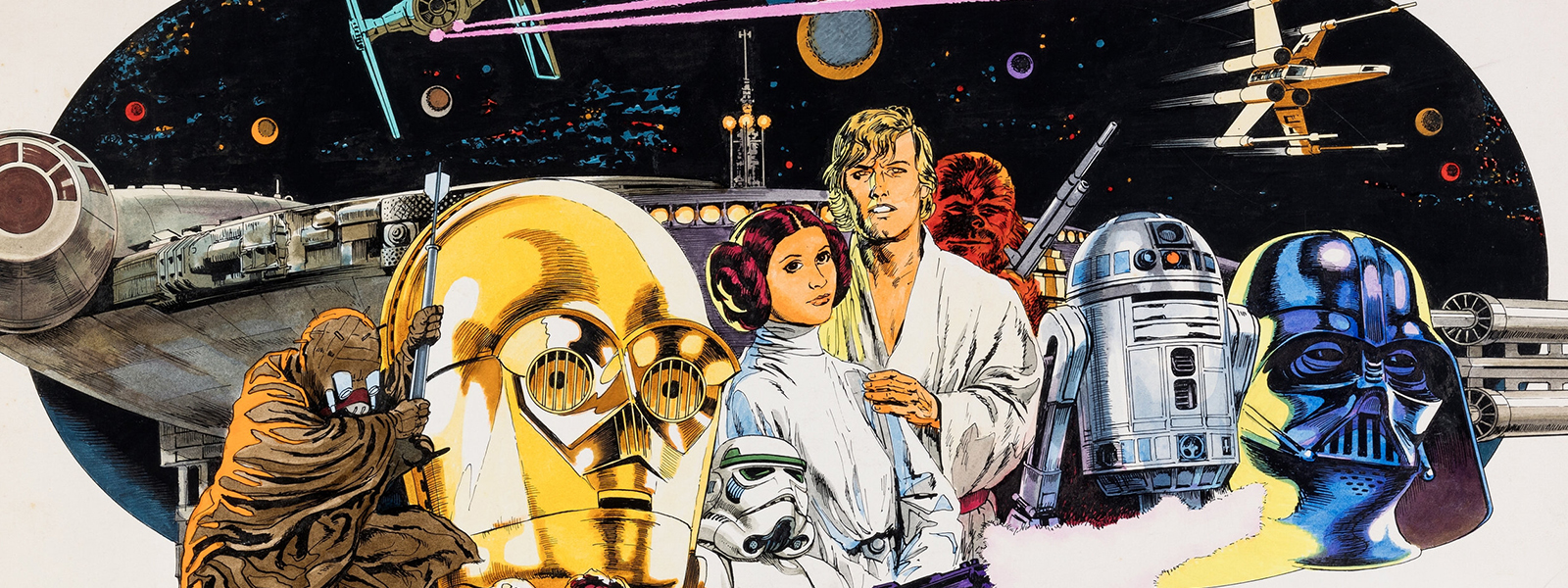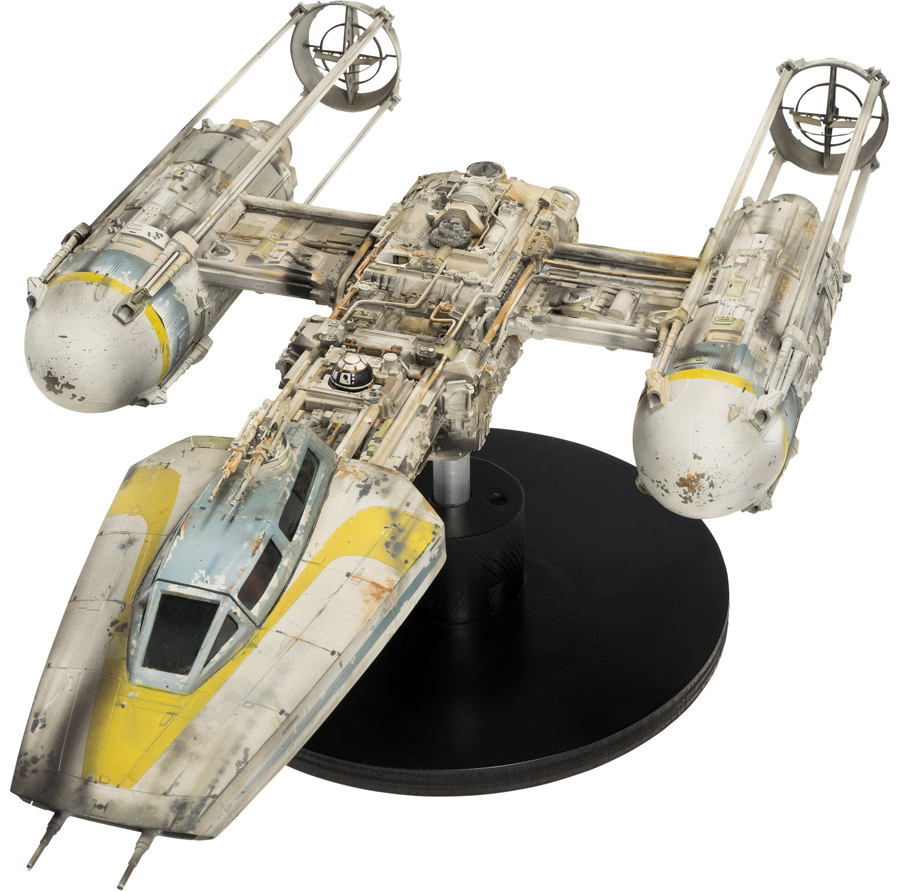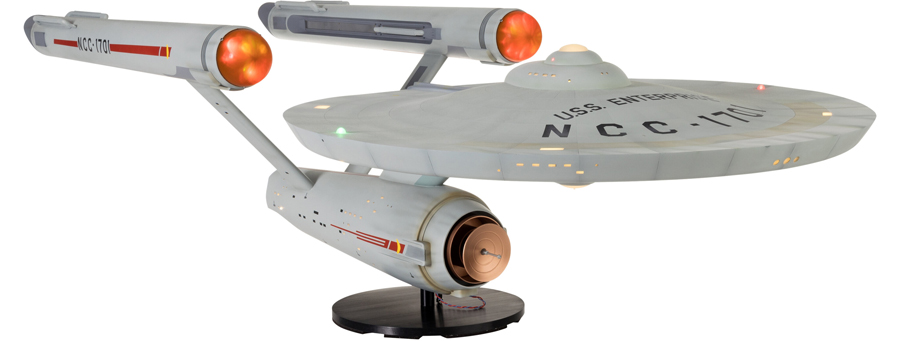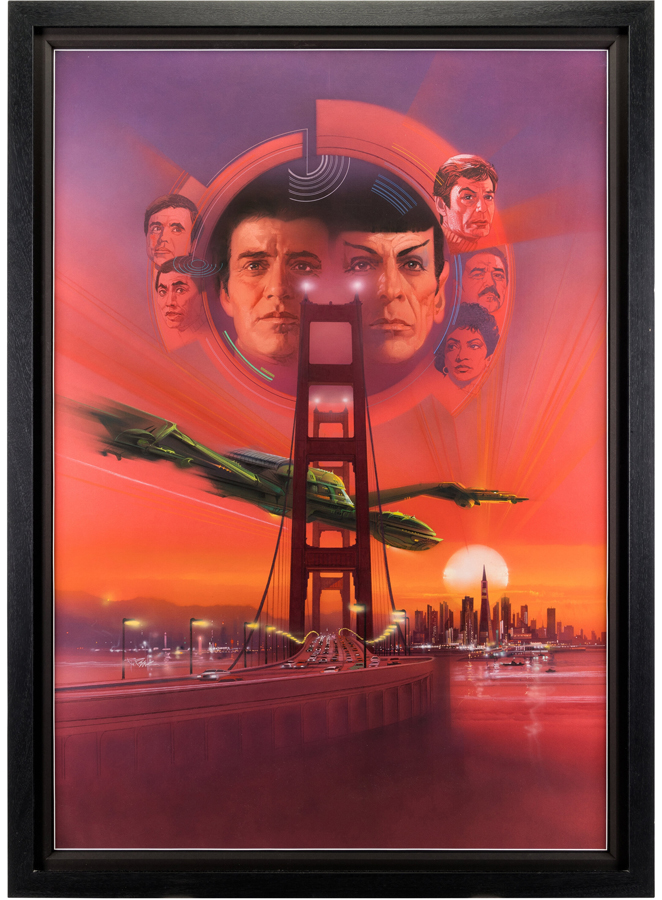FROM STAR TREK SPACESHIPS AND BLADE RUNNER POSTER ART TO PRINCESS LEIA’S INFAMOUS METAL BIKINI, SCI-FI FAVORITES ABOUND IN HERITAGE’S SUMMER ENTERTAINMENT AUCTION
By Robert Wilonsky
Heritage Auctions’ latest Hollywood/Entertainment Signature® Auction spans the vast expanses of the final frontier and a galaxy far, far away and everything in between. The July 25-26 event is a blast into hyperspace featuring beloved starships, iconic costumes and important artwork from the worlds of Star Trek and Star Wars, as well as the films that influenced those franchises and the entertainment inspired by them. As Heritage’s Executive Vice President Joe Maddalena puts it, “We’re bringing together some of the most important cultural artifacts that have never before been in a single place. When you do that, you immediately, instinctively recognize the importance and influence of these science-fiction films and television shows – how they’ve shaped how we look at and think about the world and beyond.”
Below, we’ve rounded up some of our favorite otherworldly relics from the nearly 600-lot auction.
The Y-wing Starfighter That Helped Take Down the Death Star in 1977’s Star Wars
The Y-wing takes flight at Heritage less than a year after a screen-matched X-wing starfighter from Star Wars, from the collection of Oscar- and Emmy-nominated miniature man Greg Jein, realized $3,135,000. This ship is no less special: It was designed by modelmaker Colin Cantwell, among the first artists hired by George Lucas to work on Star Wars. As J.W. Rinzler notes in The Making of Star Wars, Cantwell was one of “the class of 2001,” which meant he’d worked with visual-effects revolutionary Douglas Trumbull on Stanley Kubrick’s 1968 masterpiece that brought realism and poetry to science-fiction cinema. Cantwell and conceptual artist Ralph McQuarrie, the man credited with the franchise’s visual aesthetic, turned ideas into sketches into paintings into models – among them Cantwell’s Y-wing, which Rinzler writes was “perhaps the first concept model approved” by Lucas. This miniature is particularly noteworthy as it’s one of only two hero models made for the film and meant to be seen close up. And it’s especially beloved by fans: This is Gold Leader Jon “Dutch” Vander’s so-called TIE Killer, given its moniker because of the TIE fighter painted on its nose, which led the first trench run on the Death Star before Darth Vader destroyed it.
The Metal Bikini Princess Leia Wore as Jabba the Hutt’s Slave in Return of the Jedi
By a certain segment of the fandom, no less adored is the so-called Slave Leia outfit that Carrie Fisher had to endure while filming Star Wars: Episode VI – Return of the Jedi. Not surprisingly, Fisher had strong thoughts about the Frank Frazetta-inspired, Nilo Rodis-Jamero-designed, Richard Miller-sculpted outfit made of resin and urethane. She told Rolling Stone before the film’s release that Jedi was meant to transition Leia from her Star Wars “soldier” into someone “more feminine, more supportive, more affectionate. But let’s not forget that these movies are basically boys’ fantasies. So the other way they made her more female in this one was to have her take off her clothes.” This costume was more than just a piece of wardrobe. It became a metaphor, a lightning rod, a side to be taken in the culture wars – not to mention a perennial Halloween costume. Lucasfilm considered pretending it never existed. Essays were written that asked, “Is Star Wars Slave Leia Offensive Or Feminist?” The Hollywood Reporter noted in 2016 that “it has sparked controversy and fascination since its 1983 debut.” Even Fisher came to embrace it as a feminist metaphor, telling The Wall Street Journal that “a giant slug captured me and forced me to wear that stupid outfit, and then I killed him because I didn’t like it.”
The USS Excelsior That Crashed Star Trek: Voyager’s Classic ‘Flashback’ Episode
The closest Star Trek fans get to sexy and controversial is the USS Excelsior, which was introduced to the crew of the USS Enterprise in Star Trek III: The Search for Spock upon their return to Spacedock. “My friends, the great experiment, Excelsior,” said Captain Kirk – the first ship in Starfleet with transwarp drive. “And if my grandmother had wheels,” said Mr. Scott, for whom the Enterprise was his only love, “she’d be a wagon.” Greg Jein made this auction’s Excelsior to celebrate Trek’s 30th anniversary: It was used in the Voyager 1996 episode “Flashback,” which takes place aboard the ship piloted by Captain Sulu during the events of the sixth Trek film, The Undiscovered Country. The original big-screen model used in the films had been repurposed and modified so often that Jein fashioned a brand-new Excelsior for the small screen. Yet in person, the miniature – which has been oft-displayed, including at the Museum of Pop Culture in Seattle’s Star Trek: Exploring New Worlds exhibition –somehow remains larger than life.
A USS Enterprise Miniature From Star Trek: Deep Space Nine With Working Lights and Engines
That’s no less true of this auction’s stunning, 5.5-foot-long illuminated USS Enterprise, a collaboration between Jein and Lou Zutavern, Jein’s shop foreman and an expert modelmaker himself. Jein made the hull for an episode of Star Trek: Deep Space Nine that was supposed to feature Mr. Scott in search of the USS Defiant, first seen in The Original Series episode “The Tholian Web.” When that DS9 episode was shelved before filming, and with the ship unfinished, Zutavern spent a few hundred hours retooling the ship into the Enterprise – a display piece that’s as ready for its close-up as any model ever made.
An Original Painting of the USS Enterprise by the Man Who Designed It
The Enterprise and its crew soar throughout this auction: Here is the only known painting of the Federation’s flagship by Walter “Matt” Jefferies, the Star Trek art director who created it. In the 1968 book The Making of Star Trek, Jefferies said the Enterprise’s design “was arrived at by a process of elimination,” based partly on designs he’d seen at NASA, Douglas Aircraft and other aerospace engineering outfits. The result was what Comic Book Resources once called, and rightly so, “sci-fi’s most beautiful starship.” This painting, signed by Jefferies, was ultimately used as the cover of Richard Jefferies’ book Beyond the Clouds: The Lifetime Trek of Walter “Matt” Jefferies, Artist and Visionary, which paid homage to his brother.
The Final Movie Poster Artwork for Star Trek IV: The Voyage Home
The Enterprise is absent from this artwork, replaced by a stolen and rechristened Klingon Bird of Prey, but its crew takes center stage in Bob Peak’s original artwork for the Star Trek IV: The Voyage Home poster. Peak was celebrated for “injecting vitality and vibrant colors” into his magazine covers and movie posters, as The New York Times noted upon his untimely death in 1992. Even an expurgated list of his work features some of the most recognizable movie art of the last half-century, including West Side Story – items from which also serve as highlights of this auction – and the first five Star Trek films, including this one dealing with time travel, humpback whales and a return to San Francisco.
Original Concept Art for the Blade Runner Poster
Peak was one of a handful of movie-poster artists revered by filmmakers, cinephiles and art collectors, alongside Drew Struzan, Richard Amsel and John Alvin. The latter began his career with the Blazing Saddles artwork, gave E.T.’s poster its magic touch and had such a range he created posters for The Lord of the Rings trilogy, the Harry Potter movies, The Lion King, Bo Derek’s 10 and the Dolly Parton-Sylvester Stallone epic Rhinestone. Among Alvin’s most memorable images is the artwork for the Blade Runner poster, featuring Harrison Ford’s cop Rick Deckard, Sean Young’s replicant Rachael and the dystopian, dizzying Los Angeles of 2019, which was as much a character in the film as any actor. Alvin’s original conceptual art for that poster, used as the cover of Criterion Collection’s laserdisc release in 1989, makes its auction debut in this event. As Alvin’s website notes, the poster is as much a nod to noir as it is 1982’s possible glimpse into the distant tomorrow; the poster could have been as much about a movie set in 1959. “The Blade Runner art itself is like all of John Alvin’s original art,” says his website. “It has a way of breaking apart close up and coming together when seen from a distance.” This is no replicant. This is the real thing, the one and only.
 ROBERT WILONSKY is a staff writer at Intelligent Collector.
ROBERT WILONSKY is a staff writer at Intelligent Collector.








